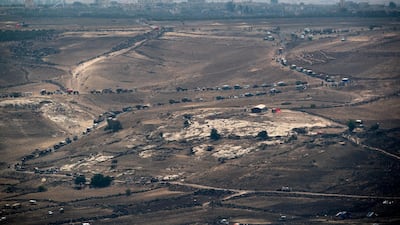The last remaining ISIS fighters in southern Syria have been surrounded in a volcanic field in the desert near the city of Sweida, where they are making a last stand.
Over the past few days, Syrian government forces have encircled the Al Safa volcanic field, a striking plateau of rolling black hills that is visible from space.
The Syrian army launched an offensive to recapture the large stretch of desert where the field lies, east of Sweida, after an attack on the Druze city by ISIS fighters last month that left more than 200 dead.
The militants captured 30 civilians during the attack on July 25, mostly women and children. The group executed a 19-year-old student and an elderly lady died of a heart attack during her captivity.
The fate of the remaining hostages is unknown. The kidnappers have released videos of the captives asking for military operations in the area to stop, and local sources claim they have also asked for a cash ransom.
The attack on Sweida sent shockwaves through the minority Druze community of 700,000, most of whom live in southern Syria, and caused anger at the government for not protecting the city sufficiently.
_______________
Read more:
Gargash: Al Qaeda in Yemen is weaker than ever
ISIS cell in Iraq kills 5 members of a family
_______________
The Syrian army has faced little resistance in recapturing the area around the Safa field. Government news outlets reported that ISIS had been engaging in hit-and-run attacks, while a small number of casualties had been caused by IEDs and landmines.
There are few places to hide in the barren hills, but videos of the operation posted online showed small caves dug into the rock, which appear to have been used as shelter.
Al Safa is part of the much larger Harrat Ash Shamah volcanic field, which stretches for 19,000 square miles through southern Syria, Israel and Jordan, and into Saudi Arabia.
The circular black smudge that distinguishes Safa in satellite images is thought to have been formed by a boiling lava lake that erupted around 1850, according to the United States space agency Nasa.

